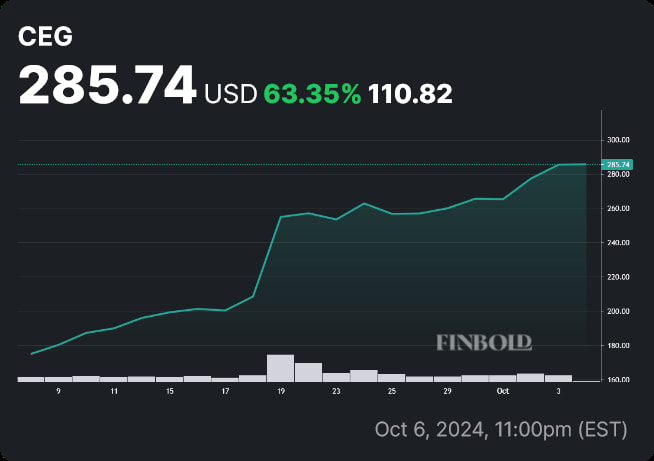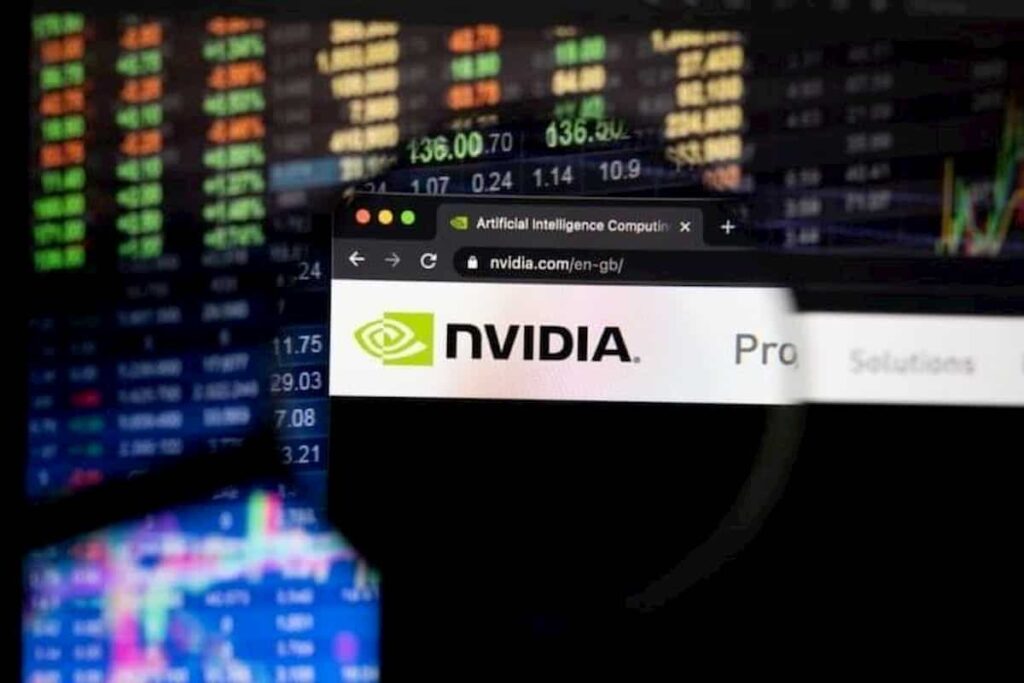While Nvidia (NASDAQ: NVDA) has been the center of attention since the AI boom started, another stock has managed to outperform it by leaps and bounds — with little to no fanfare.
At press time, Texas-based utility company Vistra Corp. (NYSE: VST) is up 268.40% year-to-date (YTD). In comparison, NVDA is up 156.88% over the same period.
VST shares have rallied by 98.11% over the course of the last six months, 83.03% over the last thirty days, and have even seen an impressive 17.62% surge in the last five days.

VST stock price climbs on AI boom
The proliferation of artificial intelligence has been the biggest paradigm shift that has affected the markets in the last five years — particularly since the tech saw widespread adoption after 2022. While this has led to increased valuations and doubtlessly carries the potential to transform entire industries, bringing about a new frontier in terms of efficiency, fears still abound about a potential ‘AI bubble’.
Valuations and bubbles aside, this shift has brought about widespread investments — and although the central players of the AI revolution, like NVDA, are focused on R&D and maintaining a cutting-edge level of technology, other businesses have seen record profits from this shift as well.
It’s all too easy to think about the expansion of AI in terms of tech and semiconductors alone — but per estimates from the World Economic Forum (WEF), the computational power needed to sustain the rise of AI is roughly doubling every 100 days — and this comes with a pretty hefty electricity bill.
Enter VST — the largest competitive power generator in the United States, with 41,000 MW of installed capacity and the second-largest storage capacity at 1,020 MW. It’s easy to draw a line as to how the big energy player cashed in on data center energy demands — but can such a surge be adequately explained by this alone?
Vistra’s nuclear acquisitions and green computing
The energy demands of AI introduce a specific problem in terms of sustainability — intermittent sources of power like wind and solar aren’t exactly suitable for constant, high power demands. To solve the issue, businesses like Microsoft (NASDAQ: MSFT) have turned to nuclear power.
On September 20, MSFT signed a 20-year deal with Constellation Energy (NASDAQ: CEG) which will see CEG restore the Three Mile Island nuclear power plant. Constellation will invest $1.6 billion in the project — in return, Microsoft will purchase the entirety of the power produced by the plant.
The announcement saw CEG prices rise from a close of $208.50 to $254.98 the next day — at press time, shares are trading at $285.74. That was a gain of 22.29% in a single day — and the stock is currently up 37.04% since the announcement.

While VST has not signed any similar deals yet, markets seem to think that it is only a matter of time. Several key catalysts provide Vistra with a unique position to replicate such partnerships.
On March 1, Vistra completed its acquisition of Energy Harbor, a move that saw the company adding four nuclear plants to its holdings, totaling more than 6,400 MW in terms of generation. In addition, the company recently announced that it has extended operating licenses for its Comanche Peak facility to 2053, signaling both long-term optimism and regulatory confidence.
Future prospects for VST
Finally, Alphabet (NASDAQ: GOOGL) CEO Sundar Pichai’s announcement that the tech giant is looking at nuclear power as a crucial way to meet the company’s ambitious net-zero emissions goal by 2030 also contributed to the rally, signaling that the turn toward nuclear power is an industry-wide trend.
Investors and traders should exercise caution — going long on a stock that is up 268.40% YTD is a risky proposition. However, shares are still trading at a modest forward price-to-earnings (P/E) of 20.72 at press time. Energy companies have become straightforward AI sympathy plays — while the real demand for electricity is present, if investor confidence in AI is shaken, utility companies could very well see their valuations significantly diminish.







